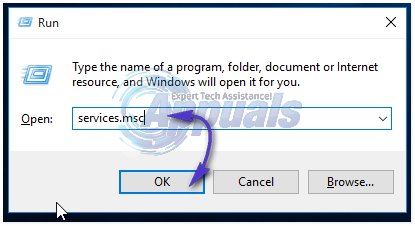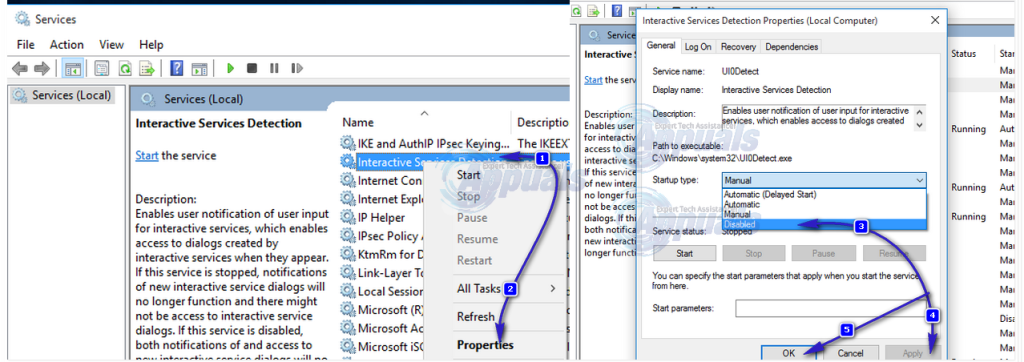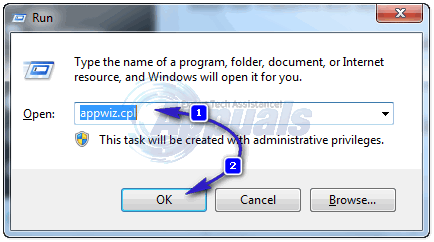FIX: How to Stop Interactive Services Detection Popups
In a Windows environment, applications should provide dialogues and popups for user interaction. However, when a background service attempts this interaction, Windows presents an Interactive Services Detection dialog box. This box may appear every five minutes, sometimes disappearing before it can be read. Its frequent appearance can be disruptive, interrupting workflow and causing disturbances.
You can either disable this service or address the issue by identifying and resolving the root problem.
The Workaround: Turning Interactive Services Detection Off
If the popup appears and disappears too quickly to respond, this may be its only solution. This method applies to Windows Vista, 7, 8, and 10.
Press the Windows key + R. In the Run window, type “services.msc” and press Enter. If a UAC warning appears, click Yes.

A window listing services will appear. Find ‘Interactive Services Detection’ under the ‘Name’ column and double-click it. The ‘Interactive Services Detection’ properties window will open. Beside ‘Startup type:’, select ‘Disabled’ from the dropdown menu, then click ‘OK’.

To execute this through Command Prompt, press the Windows Key, then type ‘cmd’. Right-click on ‘cmd’ and select ‘Run as Administrator’. When the UAC warning message appears, click ‘Yes’.

In the black window, input the following code and hit Enter.
REG add "HKLM\SYSTEM\CurrentControlSet\services\UI0Detect" /v Start /t REG_DWORD /d 4 /f

Restart your computer and test it.
Solution 1: Uninstall the Software That Triggers the Interactive Services Detection.
If you recently installed an application and began receiving this error, it’s likely conflicting with the services.
Press and hold the Windows key, and then press R. Type “appwiz.cpl” in the Run window and hit Enter.

From the list of programs, right-click the recently installed one and select Uninstall. Follow the on-screen instructions to complete this process. Restart your PC. If this resolves the issue, the program was likely the cause of the error. Consider reinstalling it or obtaining an updated version.
To identify the program causing the issue, click “Show Program Details” when the Interactive Services Detection dialog appears. If the program path aligns with an installed software, uninstall it. However, if the path is C:\Windows\System32\spoolsv.exe, the spooler service is causing the issue. Try removing and reinstalling any recently added printer.
If there’s another program, notify us in the comments section. We’ll provide a specific fix after you’ve tried all the solutions below.
Solution 2: Restore Previous System Settings
If a Windows update or system setting change has caused this issue, we can restore the system to a past date when there was no problem. However, this solution requires a previously created System Restore point.
Please close and save all applications. Press and hold the Windows Key, then press R. Type ‘rstrui.exe’ in the Run dialogue and click ‘OK‘.
F: Fluff Score: 0%

Check if the available Restore Point predates the issue. If it does, select it and click ‘Next/Finish’. Tick ‘Show More Restore Points’ to see more options. The goal is to restore the system to a working state. Restoration does not delete or affect your data, files, or folders, but only impacts programs and updates.
Solution 3: Execute System File Checker Scan.
The System File Checker Scan checks the integrity of crucial system files required for smooth running of Windows. To use it, power on your system and repeatedly tap F8 (for Windows Vista/7) until the Advanced Troubleshooting Screen appears.
Select Safe Mode and press Enter.

See steps for Windows 8 here and for Windows 10 here.
After logging into Safe Mode, press the Windows Key + R, and type the following command in the Run dialog:
%WinDir%\WinSxS\Temp
If the ‘PendingDeletes’ and ‘PendingRenames’ folders exist, delete them. Click the start button, type ‘cmd’ into the search bar. In the search results, right-click on ‘cmd’ and select ‘Run as administrator’. If the UAC warning appears, click ‘yes’.
Please enter the following command in black type and press Enter.
sfc /scannow
Allow the scan to detect corrupted or missing system files on your operating system, and let it complete to 100%.
If the process completes successfully, you’ll receive either “Windows Resource Protection did not find any integrity violations” or “Windows Resource Protection found corrupt files and successfully repaired them“. If it states that repairs were unsuccessful, execute the following command:
Dism /Online /Cleanup-Image /RestoreHealth
Restart your PC and test.